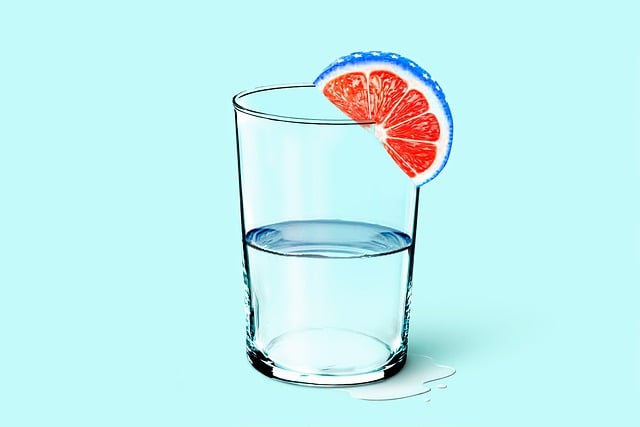Cold water immersion (cold therapy) effectively manages chronic joint pain by reducing inflammation and stimulating healing through physiological responses like vasoconstriction and reduced metabolic activity in affected areas. Regular sessions provide temporary analgesia, improve circulation, and can decrease the need for medication, making it a popular method among athletes for post-workout recovery and relief from delayed onset muscle soreness (DOMS). Implement cold therapy at home using reusable ice packs or compresses for 15-20 minutes, several times daily, to alleviate arthritis, tendinitis, and other joint conditions. Always consult a healthcare professional first, especially with sensitive skin or underlying conditions.
“Discover the power of cold water immersion as a natural, effective solution for chronic joint pain management. This comprehensive guide explores how cold therapy can significantly reduce inflammation and provide lasting relief for various joint conditions. From understanding the science behind its effectiveness to practical tips for implementing this treatment at home, you’ll uncover the benefits of cold water immersion and learn how to navigate this simple yet powerful approach.”
Understanding Cold Water Immersion for Joint Pain Relief
Cold water immersion is an effective strategy for managing chronic joint pain, leveraging the power of cold therapy to provide relief and reduce inflammation. This method involves submerging affected joints in cold water, typically at temperatures between 50-60°F (10-15°C), for a set period. The sudden exposure to cold triggers a cascade of physiological responses, including vasoconstriction (narrowing of blood vessels) and reduction in metabolic activity around the joints. These processes help to decrease swelling and inflammation, often associated with chronic joint conditions like arthritis or tendinitis.
Additionally, cold therapy numbs pain receptors, creating a temporary analgesic effect. Regular cold water immersions can also improve circulation in the affected areas, promoting the delivery of oxygen and nutrients essential for tissue repair. Many athletes and fitness enthusiasts incorporate this technique into their recovery routines to speed up post-workout muscle recovery and reduce delayed onset muscle soreness (DOMS).
How Cold Therapy Works to Reduce Chronic Inflammation
Cold therapy, also known as cryotherapy, has been found to be an effective method in reducing chronic inflammation associated with joint pain. When cold water or ice is applied to inflamed joints, it triggers a series of physiological responses that help alleviate discomfort and swelling. The primary mechanism involves the constriction of blood vessels, which reduces blood flow to the affected area. This decreases metabolic activity and the delivery of inflammatory mediators, leading to a significant decrease in pain and inflammation over time.
Additionally, cold therapy can modulate the activity of nerve endings responsible for transmitting pain signals to the brain. By slowing down nerve impulse conduction, it provides a numbing effect that offers temporary relief from chronic joint pain. Regular exposure to cold water immersion or ice baths has been shown to promote anti-inflammatory responses and even stimulate the release of natural endorphins, which are known painkillers, in the body. This holistic approach not only helps manage symptoms but also contributes to long-term joint health by reducing the overall inflammatory load.
Benefits of Cold Water Immersion for Various Joint Conditions
Cold water immersion has emerged as a powerful tool in the management of chronic joint pain, offering a natural and effective solution for various conditions. This therapeutic practice involves submerging the affected joints in cold water, typically at temperatures ranging from 50°F to 60°F (10°C to 15°C), for a specified period. One of the key benefits is its anti-inflammatory effect, which can significantly reduce swelling and pain associated with arthritis, tendinitis, and other joint inflammations.
Additionally, cold therapy for joint pain stimulates blood flow to nearby areas, enhancing nutrient delivery and promoting faster healing. It also helps in reducing muscle spasms and stiffness, providing immediate relief. Many athletes use this method for post-workout recovery, but its benefits extend far beyond sports performance. Regular cold water immersion can lead to improved mobility, reduced reliance on medications, and an overall better quality of life for individuals dealing with chronic joint pain.
Practical Tips and Precautions for Implementing Cold Therapy at Home
Implementing cold therapy at home for chronic joint pain management is an accessible and effective approach. Start by acquiring a reusable ice pack or a cold compress designed for therapeutic use. For best results, ensure the cold source is safe for skin contact and remains cold for extended periods. Apply the cold directly to the affected joints for 15-20 minutes, several times a day. Consistency is key; regular sessions can significantly reduce inflammation and alleviate pain over time.
When adopting cold therapy at home, prioritize safety. Always place a thin towel or cloth between your skin and the ice pack to prevent freezing injuries. Never apply ice directly to the skin for prolonged periods. If you experience any unusual sensations like numbness or tingling, remove the ice immediately. It’s also advisable to consult with a healthcare professional before starting, especially if you have sensitive skin or underlying joint conditions.
Cold water immersion has emerged as a promising natural remedy for chronic joint pain management, offering significant benefits in reducing inflammation and providing relief. By harnessing the power of cold therapy, individuals can experience improved mobility, decreased discomfort, and enhanced overall well-being. With proper implementation and adherence to safety precautions, this simple yet effective technique can be easily incorporated into at-home routines, empowering folks to take control of their joint health and embrace a more active lifestyle. Incorporating cold therapy for joint pain is a game-changer that deserves recognition in the world of alternative pain management.
